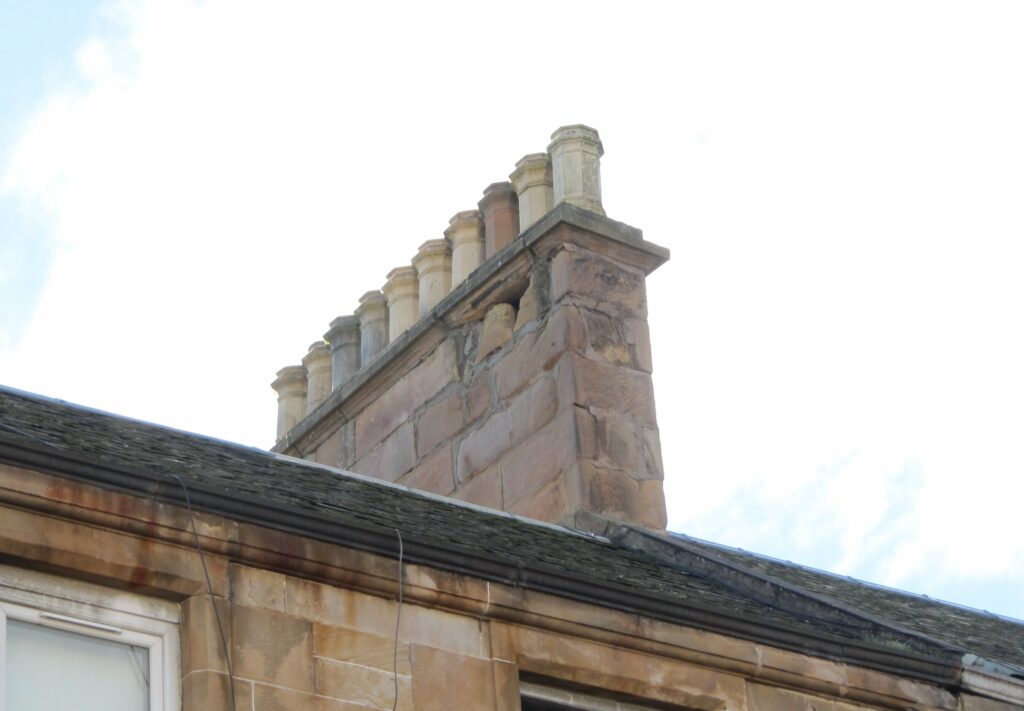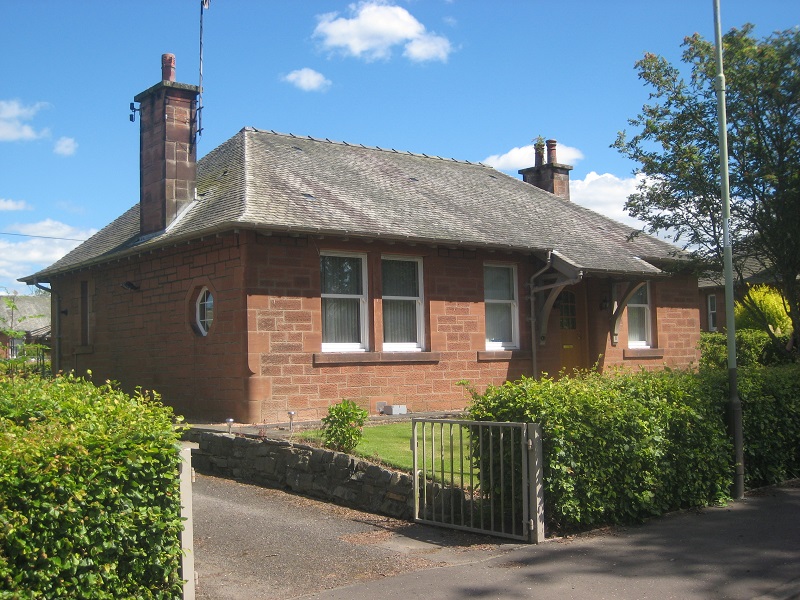How RdSAP 10.2 impacts Energy Performance Certificate (EPC) assessments in traditional buildings
Conservation, Homeowners, Sustainability | Written by: Moses Jenkins | Wednesday 1 October 2025
Energy performance certificates (EPCs) tell us how energy efficient our buildings are. The way these certificates are generated has changed.
Our Project Manager Moses Jenkins explains what recent changes mean for professionals and owners of traditional (pre-1919) buildings in Scotland.

What is RDSAP?
When a building has an Energy Performance Certificate (EPC) generated, this is produced using a methodology called Reduced Data Standard Assessment Procedure (RdSAP). This sees Domestic Energy Assessors gather data about the building and input this into software based on RdSAP. The software produces an Energy Performance Certificate, which gives a rating for a building based on its energy performance. This is then lodged and available to view online on the Scottish EPC register.
There have been a number of different versions of RdSAP, each seeking to improve upon the previous version. Since June 2025, RdSAP 10.2 has been used.
Previous versions of the software are no longer available for lodging EPCS. It is important for both professionals and homeowners to understand what changes are being made to RdSAP, and how these affect traditionally constructed buildings.
What has changed in RdSAP 10.2: An Overview
RdSAP 10.2 brings some important changes which affect how traditional buildings are assessed. Table 1 and the text below gives an idea of how some of these changes are likely to impact an EPC for a building. Overall, the effect of these changes is likely to result in traditionally constructed buildings being more accurately assessed than before. These are indicative only and should not be used as an accurate guide to performance.
Windows

The assessment of windows is now more comprehensive. Assessors must measure every window and record data around orientation, frame material, and glazing type, which includes single, double, secondary, etc.
Age, glazing gaps (the width of the spacer bar between the two panes of glass), draft proofing status and the prescence of shutters will be assessed. With draft proofing, shutters, and secondary glazing all playing an important part in the improvement of traditional windows, this should be of benefit when assessing traditional buildings. The condition of windows is not part of an RdSAP assessment but can play a significant part in the thermal performance of windows.
Room in roof
Possibly the biggest change in RdSAP 10.2 concerns the assessment and modelling of rooms in the roof. There are now two distinct room in the roof types – Type 1 and Type 2. Each of these room in the roof types allow either a ‘simplified’ data entry or a more ‘detailed’ one. Both however require more measurements than in the previous iterations of RdSAP including the measurement of flat ceilings, sloped ceilings, gable walls and common walls as well as inputs for insulation thickness etc. The key reason for this change is to better model the areas of a roof room, the heat losses and ensure better recommendations for the EPC.
Airtightness assessment
The results from air pressure testing may be used now to demonstrate the air tightness of existing buildings, if the documentation is available. Previously, air pressure test results were only used in assessing new build dwellings. This expands the range of air tightness measures that may be considered to improve an RdSAP rating. Conversely, for dwellings with poor air tightness, their energy rating may decrease. Using air pressure testing to systematically eliminate unintended ventilation pathways in a home, linked to wider improvements of building fabric, would allow additional options to be considered when looking to improve a dwelling’s EPC rating.
RdSAP 10.2 allows for both methods of testing a dwelling; 4Pa and 50Pa systems and this is very helpful for retrofit assessments that use the RdSAP 10.2 methodology and for consistency with SAP for newer dwellings that may have been tested as part of building standards compliance. Identifying air leakage points as part of the testing process will help identify areas of leakage which an EPC wont provide but will be useful to inform future thermal improvement work.
Lighting
Lighting is now more accurately assessed. More energy efficient lighting – such as LED lighting – is of benefit in the assessment. This is a more straightforward way to make a modest gain for traditional buildings.
Bulbs are now counted, whereas older RdSAP methodologies counted fittings. There is the ability to input whether the low energy lighting is LED or CFL.
Ventilation

The impact of ventilation is also more accurately accounted for in RdSAP 10.2, as various defaults used in previous versions of the RdSAP methodology are replaced with specific counts. Assessors are now required to record various flue types – distinguishing between open fireplaces, various types of flues, and including blocked chimneys fitted with ventilators. One change is that previously an open chimney fitted with a damper (e.g. a baffle plate) was not assessed as an open flue, this benefit has been removed from the RdSAP 10.2 and it is now assessed as an open flue. Effectively, fitting a damper has no impact on the ventilation losses in an RdSAP assessment although can still be an effective intervention at reducing heat loss. For mechanical ventilation systems there is also a product database so that actual systems can be input to confirm performance, including cMEV, DMEV, MVHR etc.
Generating Energy
New technologies for generating and storing power on site – such as solar PV with battery storage systems – are now accounted for in RdSAP. Recording the presence of export meters to measure the amount of electricity generated on-site being sold back to the grid is another new addition to the data collection. Small-scale hydro is also included, although this is still a relatively uncommon technology. While these technologies may have no impact on improving the building fabric of a dwelling, they can result in significant increases in a dwelling’s energy rating.
Heat Pumps
Heat pumps are now reflected more accurately, in terms of their carbon intensity. This aligns with government targets around using heat pumps. However, as they generally rely on electricity as their primary fuel, they may be penalised in terms of their RdSAP score because of the high price of electricity. It is essential that an energy assessor can access key information about the Heat Pump system, such as make and exact model, designed flow temperatures, heating control and weather compensation details (make and models) as these can be entered into RdSAP 10.2 and they mean that the calculation doesn’t have to assume a worse case performance rating.
Insulation
For wall, roof and floor insulation, additional increments are available now to record the thickness of insulation (e.g. more use of 25mm increments, rather than 50mm, with options available for when there is less than 50mm of additional insulation). More increments should mean less rounding down of the thickness of the insulation. The differentiation between various insulation materials according to their thermal conductivities (if they can be documented) (e.g. extruded polystyrene or PIR / PUR insulation) will allow more accurate assessments of the impact of fabric improvements. These changes mean that in a traditional building where a thinner insulation is used, it is still possible to record a positive gain in RdSAP-10.2.
Indicative effect of changes contained in RdSAP-10.2
| Change in RdSAP 10 | Indicative Effect on EPC (+ or – RdSAP points from previous version) |
|---|---|
| 100% draughtproofing windows and doors | 0 to +2 |
| Fitting shutters | 0 to +2 |
| Fitting insulated shutters | 0 to +2 |
| 100% draughtproofing and shutters | 0 to +3 |
| 100% draughtproofing and insulated shutters | 0 to +3 |
| Air pressure testing result: | |
| 15 m³/hour/m² surface area | -1 to +1 |
| 10 m³/hour/m² surface area | +1 to +3 |
| 7 m³/hour/m² surface area | +1 to +4 |
| 5 m³/hour/m² surface area | +1 to +6 |
| 2 m³/hour/m² surface area | +2 to +6 |
| 1 m³/hour/m² surface area | +2 to +7 |
| 0.5 m³/hour/m² surface area | +2 to +7 |
| Measuring windows | 0 to +2 |
| Measuring room in roof: | |
| Simplified Type 1 | 0 |
| Detailed Type 1 | -4 |
| Simplified Type 2 | 0 |
| Detailed Type 2 | -2 |
| Use of LED lighting | 0 to +2 |
| Installing heat pump | -15 to +21 |
These impacts were calculated using 5 different traditionally constructed dwellings with assorted heating, glazing, and insulation.
Revised U-values for walls

© The Gannochy Trust
Stone walls
A further change is seen in the U-values attributed to traditional stone masonry walls. These are summarised in Table 2 below; again, the figures being indicative of probable results in RdSAP. The revised U-values are based partly on Historic Environment Scotland research in this area, and are now closer to the actual thermal performance of traditional walls than was previously the case. Where a wall lining is present, this improves the thermal performance in RdSAP.
Table: Comparison of the RdSAP-10.2 impact on u-values for traditional stone masonry walls
| Wall Type | U-value in RdSAP 2012 | U-value in RdSAP-10.2 | Difference in SAP Points |
|---|---|---|---|
| 600mm sandstone, lathe and plaster wall lining | 1.28 | 1.21 | +2 |
| 600mm sandstone, plastered on the hard | 1.80 | 1.52 | +3 |
| 600mm granite, lathe and plaster wall lining | 1.55 | 1.32 | 2 |
| 600mm granite, plastered on the hard | 2.10 | 1.70 | +4 |
These impacts were calculated using 5 different traditionally constructed dwellings with assorted heating, glazing, and insulation.
Solid Brick Walls
The default U-values for solid brick walls were also revised significantly. In RdSAP 2012 there were only two default U-values (depending on whether the wall was drylined or not) regardless of the thickness of the solid brick wall (see the table below). In RdSAP-10.2, there are more default U-values depending on the wall thickness (i.e. effectively distinguishing between a half-brick, a single brick, a 1.5-brick, and a 2-brick thick wall), and whether the wall is drylined or not (again see Table 3 below). Notionally, the RdSAP 2012 U-values are now the defaults associated with a single-brick thick wall (i.e. between 220 and 260mm). The thickness of the solid brick wall, and whether it is drylined or not can result in the same dwelling scoring between 16 and 33 on the RdSAP scale.
Table: Comparison of the RdSAP-10.2 impact on u-values for traditional solid brick wall
| Solid Brick Wall Thickness | No Drylining | With Drylining | ||
|---|---|---|---|---|
| U-value | RdSAP-10.2 Score | U-value | RdSAP-10.2 Score | |
| RdSAP 2012 any thickness | 1.70 | 24 | 1.32 | 28 |
| RdSAP-10.2 150mm | 2.50 | 16 | 1.75 | 23 |
| RdSAP-10.2 250mm | 1.70 | 24 | 1.32 | 28 |
| RdSAP-10.2 350mm | 1.40 | 27 | 1.13 | 31 |
| RdSAP-10.2 425+ mm | 1.10 | 31 | 0.93 | 33 |
| Difference | -8 to +7 SAP points | -5 to +5 SAP points | ||
Basement walls and floors
A new wall and floor type has been introduced for heated basements, improving the u-value to what would traditionally have been treated as the same wall construction as the main building and a generic floor type.
Improving an EPC Rating in RdSAP 10.2
It is likely that buildings will be required to meet a given EPC rating in the future, or to demonstrate that all efforts have been made to do so. RdSAP-10.2 allows for more flexibility in terms of measures that can be included, and more accurately reflect the differences in performance that these measures will bring. Table 4 lists some common interventions to traditional buildings, and provides an indication of their potential impact these will have on the respective buildings. The results vary, as some dwellings have very different heating systems, and different starting points their existing insulation, ventilation, and glazing levels.
| Detached Cottage: Type 2 Room in Roof – Oil Central Heating | Detached Bungalow – Solid Fuel (Wood Logs) Room Heater | End Terrace 2-Storey House – Electric Radiators | Detached Cottage with Extension: Type 1 Room in Roof – Solid Fuel Room Heater and Radiators | Mid-Floor, Mid-Block Urban Tenemental Flat | |
|---|---|---|---|---|---|
| Base SAP Score | 35 | 40 | 31 | 33 simplified RR 29 detailed RR |
75 |
| 100mm IWI² (Three scores, depending on thermal conductivity of the insulation material) | 50 / 51 / 51 | 56 / 57 / 57 | 47 / 48 / 49 | 41 / 42 / 42 | 77 / 77 / 77 |
| 50mm IWI³ (Three scores, depending on thermal conductivity of the insulation material) | 48 / 49 / 49 | 53 / 54 / 55 | 47 / 48 / 49 | 41 / 42 / 42 | 76 / 76 / 76 |
| 100mm EWI (Three scores, depending on thermal conductivity of the insulation material) | 46 / 47 / 47 | 54 / 55 / 55 | 44 / 45 / 46 | 40 / 41 / 41 | 77 / 77 / 77 |
| 275mm Loft Insulation | No loft | 42 | 32 | 30 | n/a |
| 100mm RIR Insulation | Already insulated | No room in roof | No room in roof | 30 | n/a |
| Secondary Glazing | Most of the windows in this dwelling are in the room in the roof | 42 | 35 | 34 simplified RR 31 detailed RR |
Already double glazed |
| Low-emissivity Secondary Glazing | * | 43 | 36 | 35 simplified RR 31 detailed RR |
Already double glazed |
| Vacuum Glazing in Existing Windows | 37 | 43 | 36 | 36 | Already double glazed |
| 100mm Underfloor Insulation | 38 | 44 | 33 | 37 | Mid floor flat |
| Air Source Heat Pump | 19 – 21 | 57 | 53 | 16 to 22 | 78 |
| Solar PV on Roof with Battery Storage (Three scores, respectively for a 2kWp, south-facing, 45o pitch; PV system attached to a 5kW storage battery; PV and storage battery connected to an export meter) | 39 / 42 / 44 | 47 / 51 / 55 | 36 / 38 / 38 | 35 / 37 / 38 | 80 / 84 / 90 |
Why understanding RdSAP is important – and not just for Energy Assessors
There are many wider considerations to take into account when improving energy efficiency in traditionally constructed buildings. Find out more in our comprehensive Short Guide: Energy Retrofit of Traditional Buildings. However, it is likely that considerations around improving the EPC rating of a building will play a part when deciding what measures to undertake.
An understanding of RdSAP is not just important for Domestic Energy Assessors, who use it on a day-to-day basis. It’s important for those managing buildings, and professionals with an interest in improving thermal performance. There is much more to consider than simply how a measure will affect an EPC. Given the importance of EPCs to the decision-making process, it is essential to have a correct understanding of how RdSAP functions. This allows informed decision-making for the traditional constructed built environment.
Update your personalised ad preferences to view content
Useful links and further reading
Read our Guide to Energy Retrofit in Traditional Buildings for more information on the measures you can take and explore our guidance on energy efficiency.
Here, the UK goverment explains the Standard Assessment Procedure which is used to calcuate the overview of a home’s energy performance.
Contributors to this blog: Thanks to Bill Sheldrake, Alembic Research, for the help in preparing this and to Martin Callahan, Caroline Postles and Andrew Parkin for helpful changes.
About the author:
Moses Jenkins
Dr Moses Jenkins is a Project Manager at HES. He is the author of a number of technical advice documents, including the HES Guide to Energy Retrofit and the book Survey and Assessment of Traditionally Constructed Brickwork.
View all posts by Moses Jenkins



